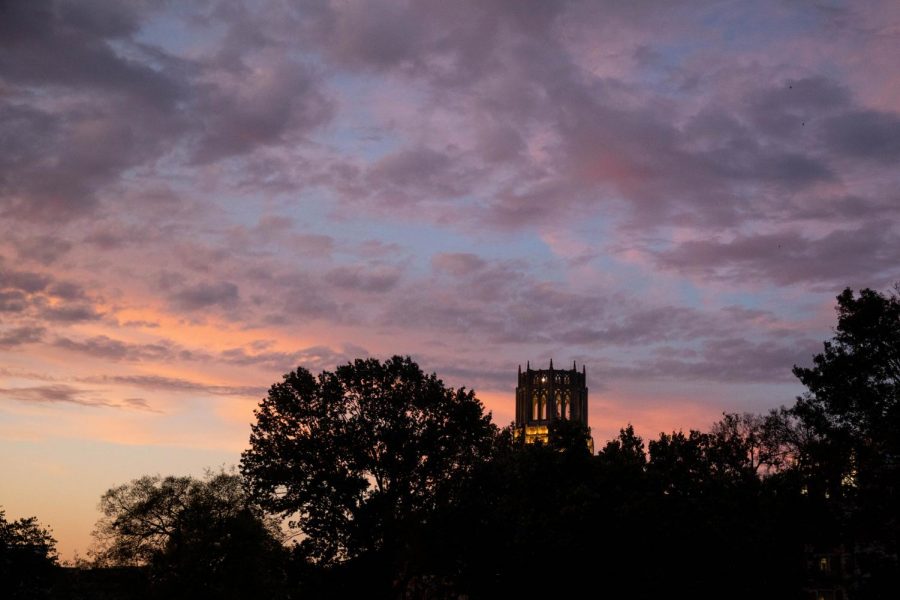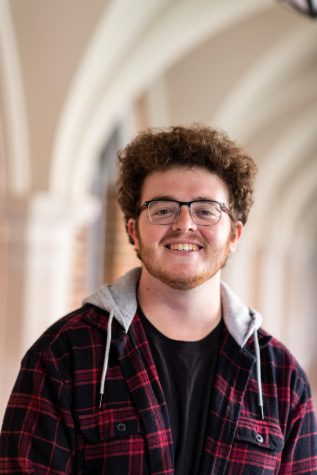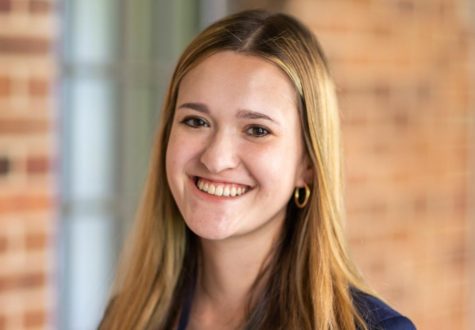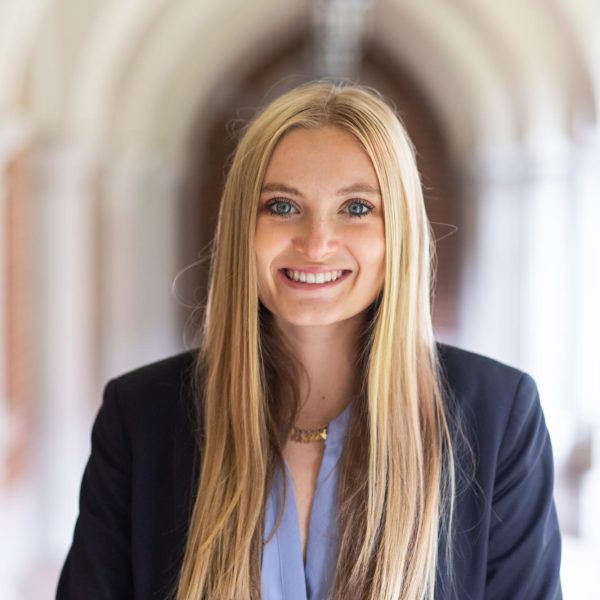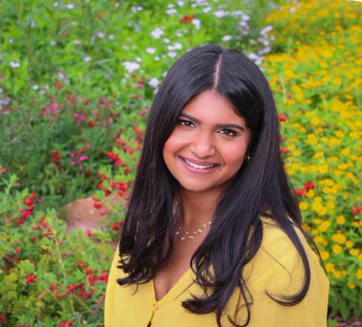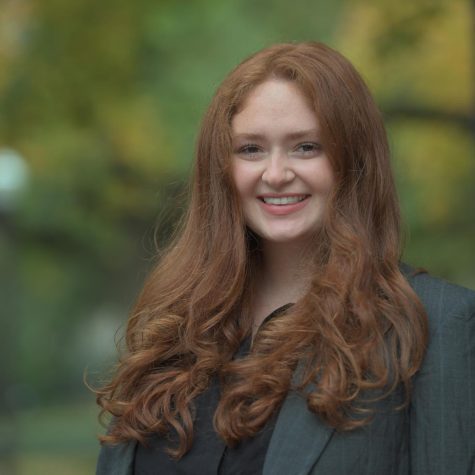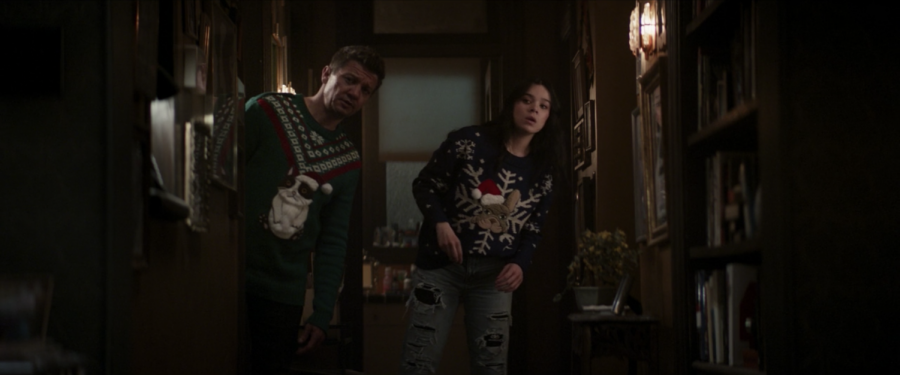What’s up, Vandy? We are the editors of this year’s Life section of The Hustler. Obviously, that means you should value our opinions on television and movies, right? Even if we’re not your favorite influencers, we’re going to give you our thoughts anyway, so listen up. Here’s the rundown of what we watched this summer:
Life Editor, Andrew (AJ) Kolondra
When I discovered I loved writing reviews, I had to embrace an unfortunate corollary truth: I’m a filmbro.
I like to think I’m not the obnoxious, annoying type who lives and breathes One Perfect Shot on Twitter—I haven’t seen enough A24 productions for that. And I try to be open to watching any movie at all, barring the rare occasion on which I’ll forbid my dad from choosing something from before 1990 for family movie night. Who knew filmbro status was an inheritable trait?
But I do have Letterboxd (follow me), I love “Interstellar” and I even tweet using the little emoji hashtags for new movies. I can’t run from the inevitable any longer.
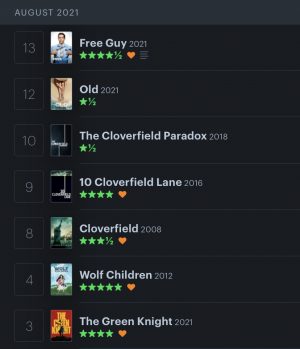
Now that I’ve exposed myself, I’m proud to say I saw 11 movies in theaters this summer and eight straight-to-streaming new releases from the comfort of my Roku TV—as well as roughly 20 other films that weren’t new, but were new to me. From the box-office blowout “Black Widow” to the absurd and cultish “Jennifer’s Body;” from the recent indie hit “The Green Knight” to one of my new favorites, “Luca;” from the sci-fi trendsetter “Cloverfield” to the absolute best movie of all time, “The Boss Baby;” my summer total came to 41 new films.
As a filmbro, the Letterboxd five-star rating scale and the summer of sequels forced me to do some thinking about how I perceive and appreciate movies. So let’s examine two duologies whose sequels came out this summer and what they taught me.
At the end of June, I watched “A Quiet Place: Part II.” A friend of mine was really excited about its release, but I had never seen the first one, so I set some time aside to watch John Krasinski and Emily Blunt pretend to be survivalists on screen for an hour and a half in a world as unforgiving as it was unoriginal.
The first film had decent production value, but I simply didn’t enjoy it—and I faced the exact same dilemma when the sequel revealed itself to be the exact same movie. The accuracy of its portrayal of deafness improved only marginally, the characters still made foolish decisions and the Cloverfield-knockoff monsters received a so-called “origin story” with about as much depth as “Mars Attacks!” Neat camerawork, a semi-interesting core concept and above-average acting from Blunt and others meant I could forgive the first film’s blunders enough to rate it a cool three out of five stars, but the best I could give the second one—which added nothing to Krasinski’s fictional universe—was a measly one and a half condolence stars. It was grueling, it was anxious, it was visually appealing—but it was lame and bland.
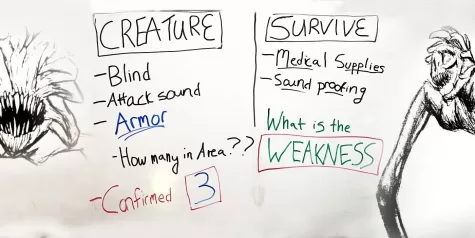
A month later, the same friend and I double-headered “Escape Room” at home and “Escape Room: Tournament of Champions” in theaters. We knew going in that both would be awful, yet they were probably the most fun films we saw all summer.
Opposite the Quiet Place duo, these were garbage movies that I absolutely adored—meaning I couldn’t possibly give them more than two and a half stars, but the predictable horror plots nevertheless had me on the edge of my seat the entire time. Original concept, check. Bad acting, check. Ridiculous and mesmerizing special effects and set design, check. The “Escape Room” franchise seems to me the perfect recipe for searingly bad movies that are nevertheless crazy goddamn enjoyable, and the second film even orchestrated a thoughtful B-plot and ended on a world-shattering twist that had the theater hollering. I can’t wait to return to theaters for that threequel, but you’d have to pay me to watch the inevitable third installment of “A Quiet Place.”
What I’m trying to demonstrate with this comparison is that you don’t have to be a pretentious cinema major to enjoy a film, especially when so many of them try too hard to be innovative and fail. I rated both Escape Room flicks lower than the first Quiet Place despite liking them a lot more—proof that a movie can be terrible and exhilarating, or it can be satisfactory and largely uninteresting. I won’t even try to explain my thoughts on “Cruella.”
A good movie is just one that you had fun watching, and you don’t have to justify that to anyone, be it with an impassioned rant on the way home from the theater or a 500-word review published online (but if you’re interested in the latter, hit us up). At the end of the day, everyone interprets films differently. As long as we all agree that “The Boss Baby” is a modern masterpiece, then you like what you like, and that’s okay. Filmbro out.
Deputy Life Editor, Phoebe Sklansky
As The Hustler’s resident recapper of all things “Bachelor,” you can probably guess a few things about my taste in entertainment: one, I’m a simp for anything trashy; two, I love some good relationship drama and three, I adore being judgemental. Naturally, most of the shows I watched this summer check all of those boxes. To be honest, I mostly watched Alabama Rush TikTok this summer, but I managed to break away from OOTDs for a few standout shows and movies.
Like anyone who saw the TikToks about the third episode of “Sex/Life” (make sure to fast foward to 19 minutes and 50 seconds), I promptly binged that show in under a week. While it was *highly* problematic—keeping a regular diary about the wild sex you had with your ex-boyfriend and getting off on reading your wife’s diary about the wild sex she had with her ex-boyfriend would be a challenge for even the best of therapists—damn, did it draw me in. The contrast between Billie’s (Sarah Shahi) manicured life as a Connecticut housewife and her role as a rock groupie with a sexually adventurous past is gripping. The female gaze was also a big part of this show, which added a refreshing and thought-provoking layer to the more ~intimate~ scenes. Trashy? Check. Relationship drama? Check. Judge-worthy content? Check.
I also watched the fifth and final season of “The Bold Type,” a sitcom based on the life of Cosmopolitan’s editor-in-chief. I seriously identify with Jane Sloan (Katie Stevens)—she is a Type A brunette writer, after all—and I enjoy the camaraderie that the Scarlet staff has. It’s aggressively positive and progressive at times, but Melora Hardin—whom you may know as Jan Levinson from “The Office”—as the magazine’s editor makes it worth the watch. Great for multi-tasking or unwinding after a long day. I wouldn’t call it trashy—cringey, if anything—but it checks my other boxes.
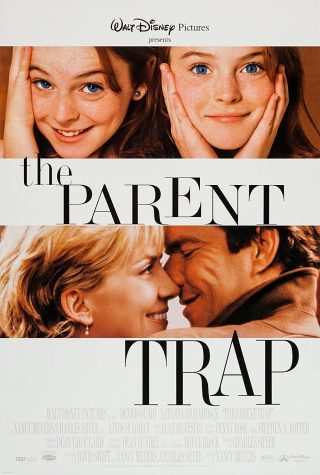
Based on my editorial board position, you’d think that I’d be all over whatever’s new in the TV and movie world, but I’m also a total sucker for nostalgic entertainment. This summer, I took a walk down memory lane and watched several movies that I loved as a tween, and I’ll be frank: they still absolutely slap. I started with “The Parent Trap,” starring early aughts queen Lindsay Lohan, and was not at all shocked that I can still quote more than half of the movie’s lines. Elizabeth James’ “I’m not mature enough for this” breakdown in her closet will forever be a mood, and there is something so viscerally sexy about Dennis Quaid as Nick Parker that I couldn’t appreciate at age 12.
I chased that with “The Princess Diaries 2: Royal Engagement,” since I’ve already seen the first one a dozen times and needed a good dose of Chris Pine. Anne Hathaway is wonderful per usual and the second-hand embarrassment from watching Mia Thermopolis’ antics is real. Then, I cleansed my palate with “Cheaper by the Dozen 2,” because as AJ put it, it was the summer of sequels. On rare occasions, I’m a sucker for wholesome content, and this hit the spot. Plus, the combination of Steve Martin, Hilary Duff, Alyson Stoner and Taylor Lautner is *chef’s kiss*.
With summer coming to a close, I’m shifting my attention to “Bachelor in Paradise” and looking ahead to what promises to be a reality TV-riddled fall. Plus, we’ve got Lady Gaga as Maurizio Gucci’s ex-wife to look forward to.
Deputy Life Editor, Jaime Svinth
I’m not gonna lie; unlike AJ, I’m not a “filmbro.” I’m one of those people who watches countless pilot episodes on Netflix but has commitment issues when it comes to picking one show and sticking with it. And while I do love movies, looking back, I only watched one this whole summer. Disappointing, I know.
I wish I could say that my pickiness for Netflix shows makes me all the better of a recommender when it comes to picking a good one, but unfortunately I think it’s the opposite—hence my first recommendation: “Too Hot to Handle.”
Trashy TV gets me every time. And this has to be at the top of the trashy list, especially the latest season. For those of you unfamiliar, “Too Hot to Handle” is a Netflix original, the premise of which is to lure about ten of the horniest people producers can find on the Internet to a luxurious beach vacation. Then, drop the bomb that they’re actually on a show where they can’t have any sexual relations with others on the retreat, or else they lose money from an $100,000 prize fund, which they all split at the end. It’s supposed to be a transformative experience in which these people, who usually only go for superficial hookups, learn the value of connection and let go of their old ways. Yeah, right.
The entertainment comes from watching a bunch of extremely attractive people try to have a real conversation with each other without any physical connection. This season especially, the cast seemed to lack in the flirting department, and it was painful to watch. I guess that’s why we watch these shows like any competition—we love and hate a few of the characters, scream at the TV when they do stupid things and anxiously anticipate the crowning of a winner (or a few). If you go for reality TV that’s a little (a lot) cringey, mindless, yet somehow addicting, this is definitely for you.
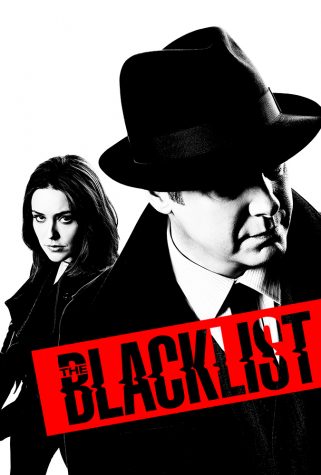
After the trashy TV rec, here’s a more quality recommendation: “The Blacklist.” It’s eight seasons long, 20 episodes per season and 45 minutes per episode. And it’s good. “The Blacklist” follows Raymond Reddington (played by James Spader) as a criminal broker turned FBI ally, who helps the FBI catch the worst criminals in the world (his “blacklist”) in exchange for his freedom. The catch—the only person he will speak to is Elizabeth Keen, the newest FBI agent whose life is turned upside down when she meets Reddington and discovers that, essentially, her entire life has been a lie.
It’s sort of like “Criminal Minds” but with better character development. You’re scared, you’re shocked, you’re clenching your teeth when the criminal almost gets away and you go back for more after every episode. It’s a long series, but it’s the only show in the past three years that has made me want to commit to the journey of finishing it. Cheers to that.
Movie theaters are back, and it’s only fitting that my first time back in some squished seats eating buttered popcorn was for a Marvel movie. Though I’m aware that they follow the same exact storyline in every movie, they just don’t ever disappoint me. This one was no different, adding a compelling and unique backstory for Natasha Romanoff (Scarlett Johansson), who is whisked away as a child and trained in villain Dreykov’s “Red Room” (aka his room where he puts women under mind control … scary, I know). The movie follows her quest to break Dreykov’s power and release the other women from the Red Room after she did so herself many years before. I absolutely loved that Marvel’s summer movie was not only one with a female lead, but also one heavily female-dominated in all aspects. Along with the action-packed, edge-of-your-seat storyline, “Black Widow” weaves in a subplot based around Natasha finding her long-lost sister, and their journey to cultivate a sisterly bond is both tender and hilarious.
Life Copy Editor, Sahanya Bhaktaram
I am a sucker for all things Mindy Kaling, so when I say I watched season two of “Never Have I Ever,” it wasn’t something that I just turned on for the sake of finding something to watch. I counted down the days until its release, and I watched the whole thing in one sitting—as someone who isn’t a binge watcher, that’s a big deal. Then, I rewatched it a week later.
The first season follows Indian-American Devi Vishwakumar as she begins a new year of high school destined to become cool (which she equates to having a boyfriend) after losing her father and becoming temporarily paralyzed from the shock. Devi decides to add some extra-curriculars, which include *trying* to have sex with school hearthrob Paxton Hall-Yoshida and going to her first high school party, as well as navigating her rigorous academic schedule. Nothing will stop her from achieving a perfect transcript and having fun, besides her overbearing mother, rash decision making and academic nemesis Ben Gross (did someone say enemies to lovers?). In this season, on her quest for romance and popularity, Devi discovers there is room for more than one Indian-American at her school but not two boyfriends.
As the daughter of South Indian immigrants (like creator Mindy Kaling and Devi), I endorse Kaling’s portrayal of the Indian-American teenage experience. It means a lot to see a familiar experience represented through the show, but NHIE is also a more general win for representation in the multidimensionality of its diverse cast. While representation is finally a consideration in Hollywood, often it is believed to have been achieved when a white protagonist is cast with a gay friend or maybe an Asian teacher. While there’s always room for improvement, Kaling has created a show where each character has their own personality, interests and developing storyline in conjunction with protagonist Devi. Additionally, the show strikes the perfect balance of predictability and investment in each character to keep you watching (as every cheesy rom-com/sit-com should). Although I may be biased, the show is easy to watch and is bound to make anyone laugh.
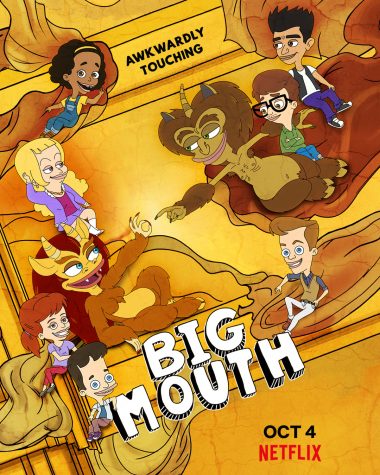
Let’s make a hard U-turn. I live for the awkward coming-of-age plotline, and I could not be a bigger John Mulaney fan, so I spent the majority of my summer watching “Big Mouth” and consequently talking about it to anyone who would listen. Created by Nick Kroll, his childhood best friend Andrew Goldberg, Jennifer Flackett and Mark Levin, the show follows Nick Birch (based on Kroll) and his best friend Andrew Glouberman (based on Goldberg and voiced by Mulaney) as they undergo puberty alongside their classmates. The show is brilliant—about kids, but not for kids; it encapsulates every real, gross, confusing and terrible side of not being in control of your body while feeling misunderstood by adults in the process of becoming one. As each character begins puberty, they are greeted by a personal hormone monster who will accompany them throughout the journey to offer them some (often misleading) advice.
The writers cover a wide range of topics including physical development, sexuality, drug and alcohol use and mental health from both the female and male perspective. Of course, the most awkward period (no pun intended but I’ll take it) of our lives occurs at a time when we care the most about what everyone around us thinks. Since it’s animated, “Big Mouth” is able to remind its audience what it’s like inside the developing minds and bodies of middle schoolers without it being too weird. Kroll struck comedic gold with the premise, but did so alongside great writing and an all-star comedian cast that really drives it home with their sincere delivery.
One last topic change, for “Love Life.” It was unlike any other romance series I’ve watched in that it felt the most authentic to what falling in and out of romantic relationships actually feels like. Just like every other show in the genre, the series follows 20-something Darby Carter (Anna Kendrick) as she juggles her career and relationships in the Big Apple. Unique to itself, however, “Love Life” portrays the lonely transitional periods of growing too old for apartments with friends and binge-drinking, missing out on soulmate connections, uncovering emotional trauma around vulnerability and figuring out what to do with your life.
Each episode features a different relationship—each a great love of Darby’s for a period of time—and how those people were necessary in shaping her into the person she is in the finale. The viewer experiences the meet-cutes and firsts with Darby just as they experience her fights and bad decisions to stay in relationships longer than she should. The very qualities that you once found endearing soon reveal themselves to be the reason to close that chapter in Darby’s love life, gearing you up to start the next episode. Anna Kendrick truly makes the protagonist, and this series is worth the watch as every character and plot line is believable and raw.
Life Copy Editor, Justine Del Monte
I know that I watched quite a few films this summer. I’m certain of it. My screentime for Netflix and Hulu are living proof. Much to my dismay, however, the only things I can distinctly remember watching are “Pitch Perfect,” “Pitch Perfect 2” and “The Kissing Booth 3.” A triple-threat renaissance, I’d say.
As someone who’s had The Sockapellas appear on my Spotify Top Songs of the Year playlist more times than I’d like to count—I fear the feature where my friends can view what I’m listening to in real time—you can infer my strong affinity for the series. I’d talk more about it, but I don’t think Anna Kendrick—better known as the girl from “Twilight” who said “Aren’t people from Arizona supposed to be, like, really tan?”—needs more than one mention in this article (thank you, Sahanya). Feel free to contact me regarding the power rankings of the films. Your opinion is probably incorrect, but I’d still like to hear it.
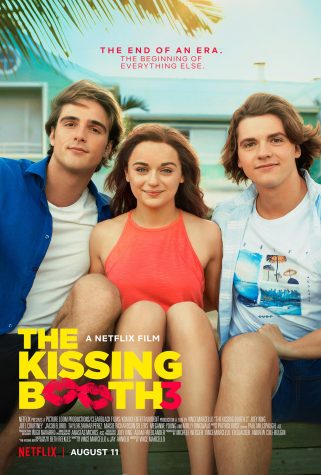
That means I have to talk instead about something we love to hate. Or, maybe just hate? I know dunking on Joey King is so easy, but I only have 20 minutes to finish this recap—which is coincidentally how long I think the movie should have been as well.
“The Kissing Booth 3” is an embodiment of all the things that went wrong with the first two films, only made funnier by the fact that the main love interests are exes in real life and the creators couldn’t find a way to make Jacob Elordi’s character stay at Harvard to take summer classes. Short-distance relationships are so hard.
This film embodies nearly every trope I could think of in a movie aimed at the indistinguishable age group it’s meant to target. It’s based on a literal kissing booth, features an aggressive amount of bucket lists, has a dead parent who’s out looking for love, includes an arcade dance game and uses montages an amount that’s downright criminal. It’s the laziest tool in film history, and the unnecessary behind-the-scenes footage of it at the end makes it all the more toe-curling when you see the actors supposedly having fun while filming it. Gross!
In the end, though, I did enjoy watching it, as it’s my favorite genre of film—the kind where you can talk through the whole movie and not miss anything. I thoroughly enjoyed searching phrases like “Joey King wig bad” on Twitter to bond with my fellow haters and pausing every three minutes to quadruple-check that there was still an hour and a half left of the movie to go.
Thank you, “Kissing Booth” franchise. I hate to see you go, but I love to watch you leave.






